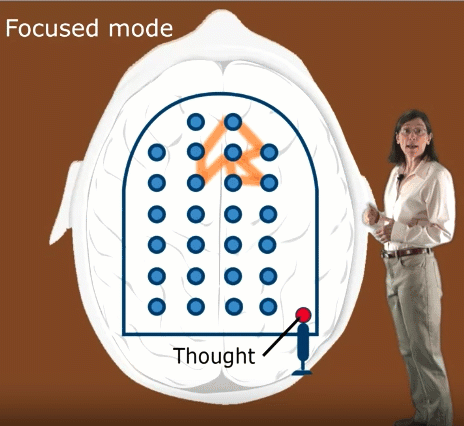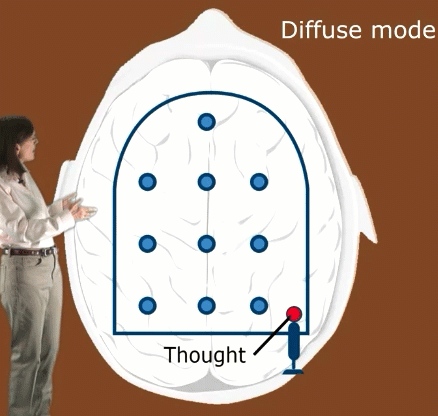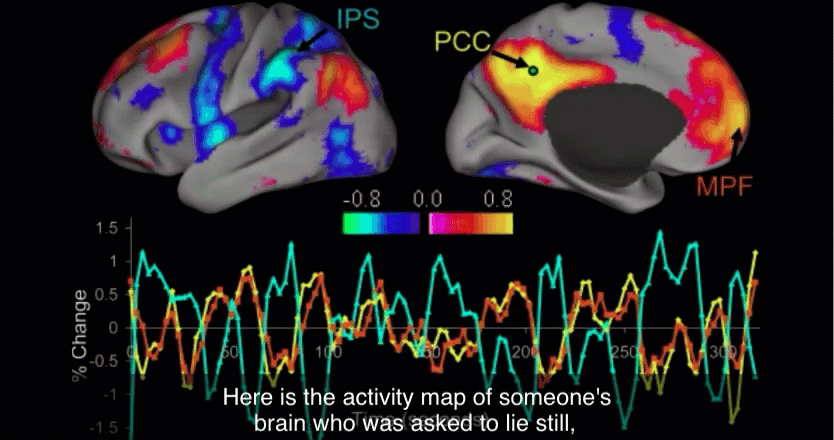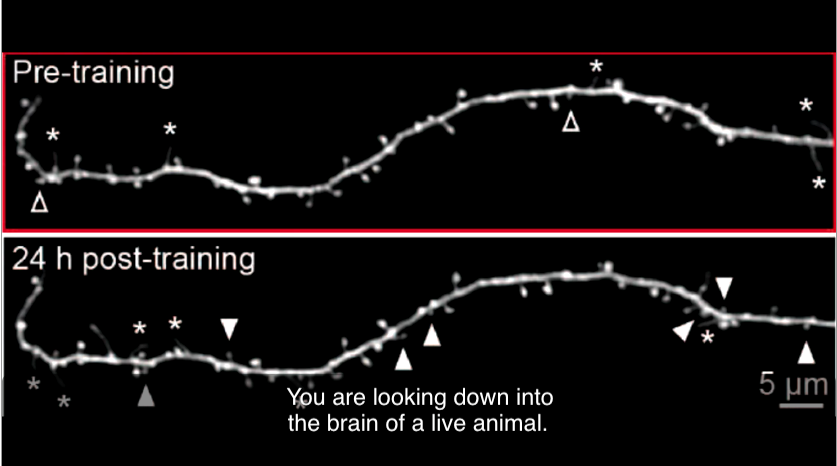Focused and Diffuse thinking modes | Learning How to Learn
16/02/20 23:45 Filed in: MOOC
Focused and Diffuse thinking modes | Learning How to Learn
Learning summary of a course which can change your whole life

Learning how to learn also can reduce your frustration level in difficult subjects.
I recently have seen one of my friends share this course in his WeChat Moment and I decided to try it myself.
This course can change the way you think about your brain and the way you think of your learning ability. It provides you both the discoveries in Neural-Science researches and the practicable suggestions.
You can improve your natural ability in any discipline still further by learning how to learn.
This whole learning summary contains four separate articles, one article for one corresponding module in this course.
Focused and Diffuse Modes
Basically, there are two kinds of modes when we are thinking--focused, and diffuse mode.
We are familiar with focusing, it's when you concentrate intently on something you're trying to learn or to understand.
You think a thought, boom, it takes off, moves smoothly along. And then, as it's bouncing around on the bumpers, you're able to figure out the problem you're trying to solve, or. The concept you're trying to understand that's related to something you're rather familiar with.
We are not familiar with diffuse thinking, however, this more relaxed thinking style is as important as focus mode, some cases, even more important.
In this diffuse mode of thinking, you can look at things broadly from a very different, big-picture perspective. You can make new neural connections traveling along new pathways. You can't focus in as tightly as you often need to, to finalize any kind of problem solving.
How to use focus and diffuse mode together.
 According to legend, what Edison used to do was he'd sit and relax in his chair, holding ball bearings in his hand. He'd relax away letting his mind run free. Although, it would often noodle back in a much more relaxed way to what he'd been focusing on previously. When Edison would fall asleep, the ball bearings would drop and clatter to the ground just as with Dalí, and it would wake Edison up, and off he'd go with his ideas from the diffuse mode ready to take them into the focus mode and build on them.
According to legend, what Edison used to do was he'd sit and relax in his chair, holding ball bearings in his hand. He'd relax away letting his mind run free. Although, it would often noodle back in a much more relaxed way to what he'd been focusing on previously. When Edison would fall asleep, the ball bearings would drop and clatter to the ground just as with Dalí, and it would wake Edison up, and off he'd go with his ideas from the diffuse mode ready to take them into the focus mode and build on them.
So, the bottom line is, when you're learning something new, especially something that's a little more difficult, your mind needs to be able to go back and forth between the two different learning modes.
What is Learning
This illustrates that, intriguingly, that you are not the same person you were after a night's sleep or even a nap. It is if you went to bed with one brain and woke up with an upgrade.

This brain weighs three pounds, but it consumes ten times more energy by weight than the rest of the body, a very expensive organ. It is the most complex device in the known universe. All of your thoughts, your hopes, your fears are in the neurons in this brain.

There are a million billion synapses in your brain where memories are stored.
 How do memories stay stable over so many years? This is a picture of one dendritic branch on a neuron which receives inputs from other neurons. The synapses are on the spiny knobs coming off the dendrite. On the top, the dendrite was imaged before learning. The same dendrite is shown below after learning and after sleep. Multiple synapses that are newly formed together on the same branch are indicated by the white arrowheads.
How do memories stay stable over so many years? This is a picture of one dendritic branch on a neuron which receives inputs from other neurons. The synapses are on the spiny knobs coming off the dendrite. On the top, the dendrite was imaged before learning. The same dendrite is shown below after learning and after sleep. Multiple synapses that are newly formed together on the same branch are indicated by the white arrowheads.
Find more about your brain in brainfacts.org
Reference:
Learning summary of a course which can change your whole life

Learning how to learn also can reduce your frustration level in difficult subjects.
I recently have seen one of my friends share this course in his WeChat Moment and I decided to try it myself.
This course can change the way you think about your brain and the way you think of your learning ability. It provides you both the discoveries in Neural-Science researches and the practicable suggestions.
You can improve your natural ability in any discipline still further by learning how to learn.
This whole learning summary contains four separate articles, one article for one corresponding module in this course.
Focused and Diffuse Modes
Basically, there are two kinds of modes when we are thinking--focused, and diffuse mode.
We are familiar with focusing, it's when you concentrate intently on something you're trying to learn or to understand.
You think a thought, boom, it takes off, moves smoothly along. And then, as it's bouncing around on the bumpers, you're able to figure out the problem you're trying to solve, or. The concept you're trying to understand that's related to something you're rather familiar with.

We are not familiar with diffuse thinking, however, this more relaxed thinking style is as important as focus mode, some cases, even more important.
In this diffuse mode of thinking, you can look at things broadly from a very different, big-picture perspective. You can make new neural connections traveling along new pathways. You can't focus in as tightly as you often need to, to finalize any kind of problem solving.

How to use focus and diffuse mode together.
 According to legend, what Edison used to do was he'd sit and relax in his chair, holding ball bearings in his hand. He'd relax away letting his mind run free. Although, it would often noodle back in a much more relaxed way to what he'd been focusing on previously. When Edison would fall asleep, the ball bearings would drop and clatter to the ground just as with Dalí, and it would wake Edison up, and off he'd go with his ideas from the diffuse mode ready to take them into the focus mode and build on them.
According to legend, what Edison used to do was he'd sit and relax in his chair, holding ball bearings in his hand. He'd relax away letting his mind run free. Although, it would often noodle back in a much more relaxed way to what he'd been focusing on previously. When Edison would fall asleep, the ball bearings would drop and clatter to the ground just as with Dalí, and it would wake Edison up, and off he'd go with his ideas from the diffuse mode ready to take them into the focus mode and build on them.So, the bottom line is, when you're learning something new, especially something that's a little more difficult, your mind needs to be able to go back and forth between the two different learning modes.
What is Learning
This illustrates that, intriguingly, that you are not the same person you were after a night's sleep or even a nap. It is if you went to bed with one brain and woke up with an upgrade.

This brain weighs three pounds, but it consumes ten times more energy by weight than the rest of the body, a very expensive organ. It is the most complex device in the known universe. All of your thoughts, your hopes, your fears are in the neurons in this brain.

There are a million billion synapses in your brain where memories are stored.
 How do memories stay stable over so many years? This is a picture of one dendritic branch on a neuron which receives inputs from other neurons. The synapses are on the spiny knobs coming off the dendrite. On the top, the dendrite was imaged before learning. The same dendrite is shown below after learning and after sleep. Multiple synapses that are newly formed together on the same branch are indicated by the white arrowheads.
How do memories stay stable over so many years? This is a picture of one dendritic branch on a neuron which receives inputs from other neurons. The synapses are on the spiny knobs coming off the dendrite. On the top, the dendrite was imaged before learning. The same dendrite is shown below after learning and after sleep. Multiple synapses that are newly formed together on the same branch are indicated by the white arrowheads.Find more about your brain in brainfacts.org
Reference: